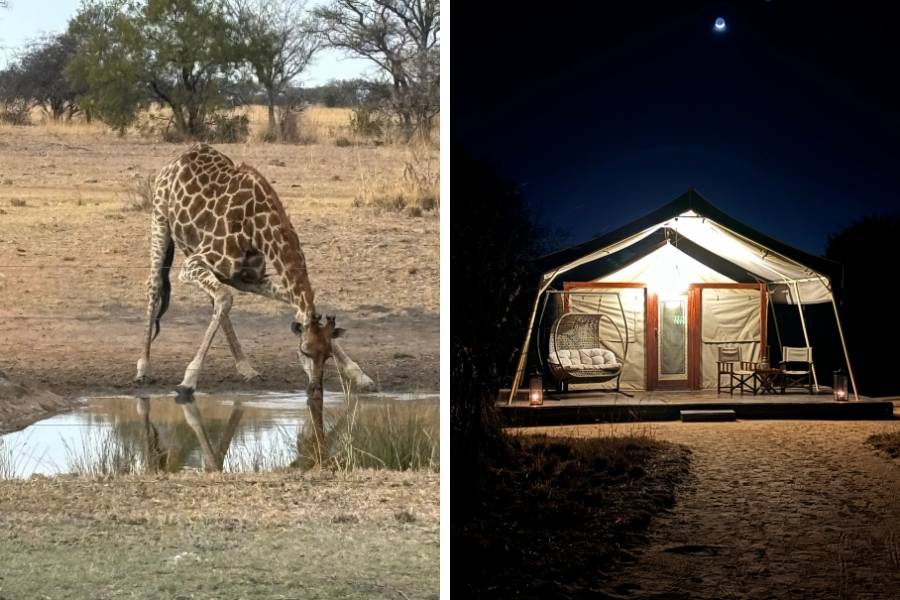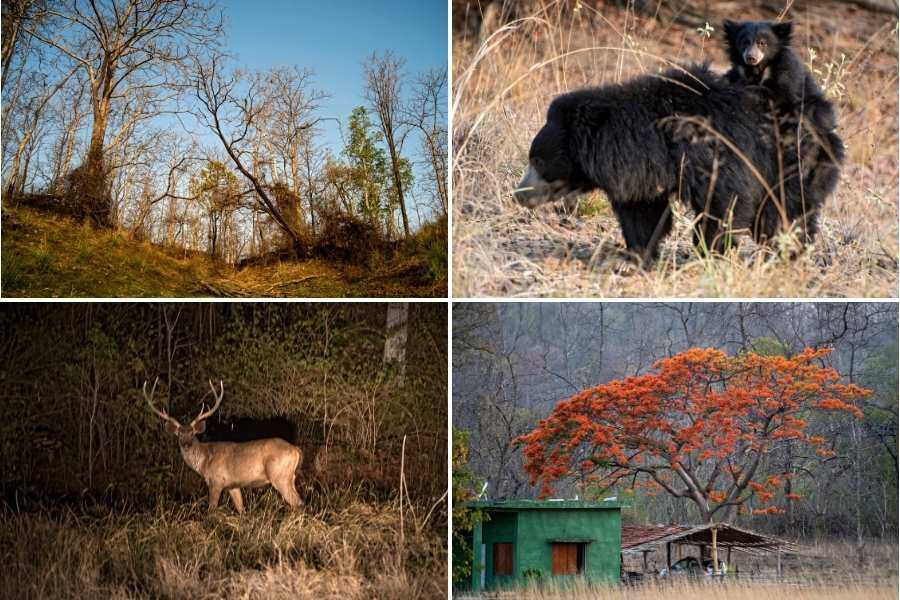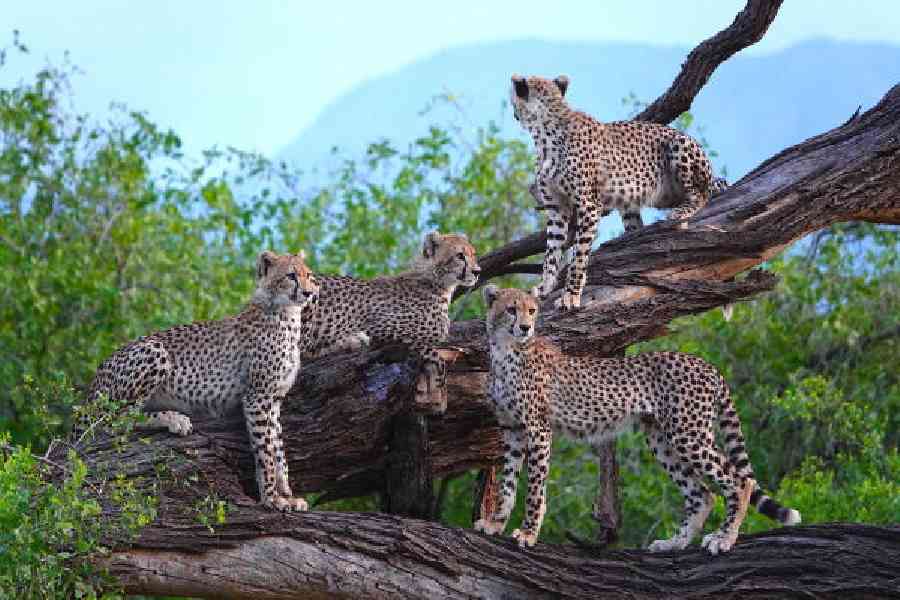I watch a pair of gangly giraffes bend their long necks and splay their legs to drink at the watering hole, as malachite kingfishers and yellow-billed hornbills fly over my head. I am at Safari Plains, a luxury five-star tented safari lodge in the Greater Mabula Game Reserve, just a few hours from Johannesburg in South Africa.
We’re in the middle of the African wilderness, but in a cocoon of creature comforts. Our spacious, colonial-style tent, with African chic-inspired decor, has a mini bar, a large bathroom and shower, and a porch area with a swing sofa. The camp also has a stunning bar and swimming pool, a luxury spa, and gourmet meals you can enjoy in the alfresco dining area, as well as a sunken braai (barbeque) pit. Besides the traditional safari drives, they also offer horseback safaris, quad bike safaris and hot-air balloon rides.
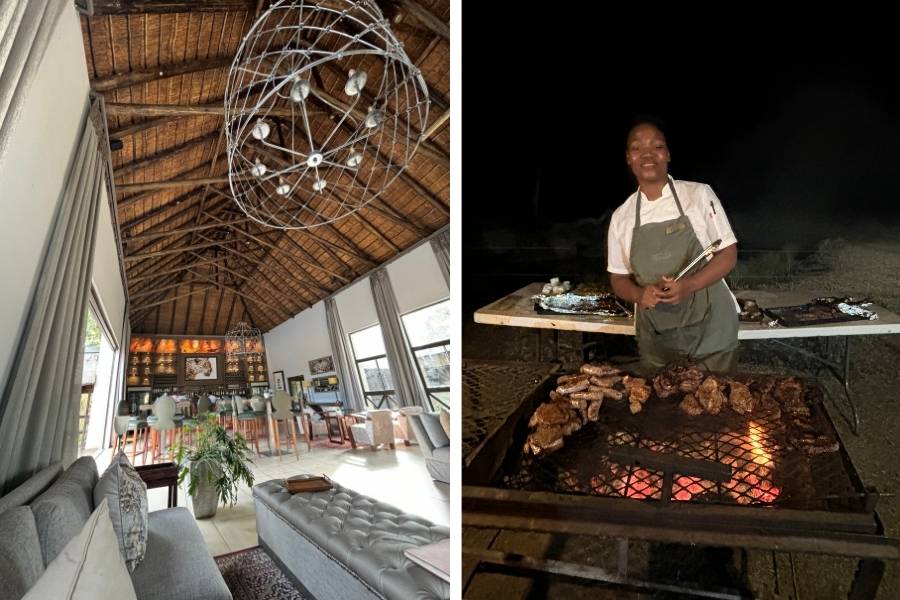
The bar and lounge, and (right) the braai at Safari Plains
The big, the little, and the ugly five
Impalas and giraffes wander around the camp and peer curiously at me through the canvas opening of the tent. As we drive to the gates of the reserve, we see a tsessebe antelope, which belongs to the wildebeest family and are ungainly grazers. Our guide, Russell Cooper, tells us that they are one of the fastest runners in the bush.
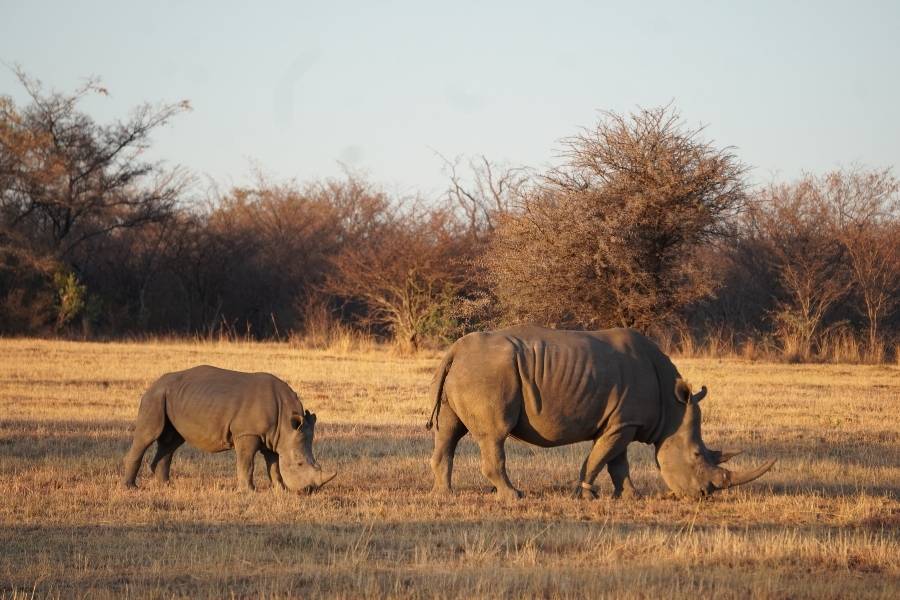
Rhinoceros are one of the 'Big Five' of African wildlife
The Greater Mabula Game Reserve is a reservoir of biodiversity, home to the Big Five (lion, leopard, elephant, rhinoceros, and African buffalo), as well as hyenas, cheetahs, zebras, wildebeest, warthogs, and a number of birds. The landscape of Mabula with its rust-coloured earth, open savannah grasslands, acacia trees, and views of the Waterberg mountains is as much an attraction, as the wildlife we spot. Every turn brings a new experience.
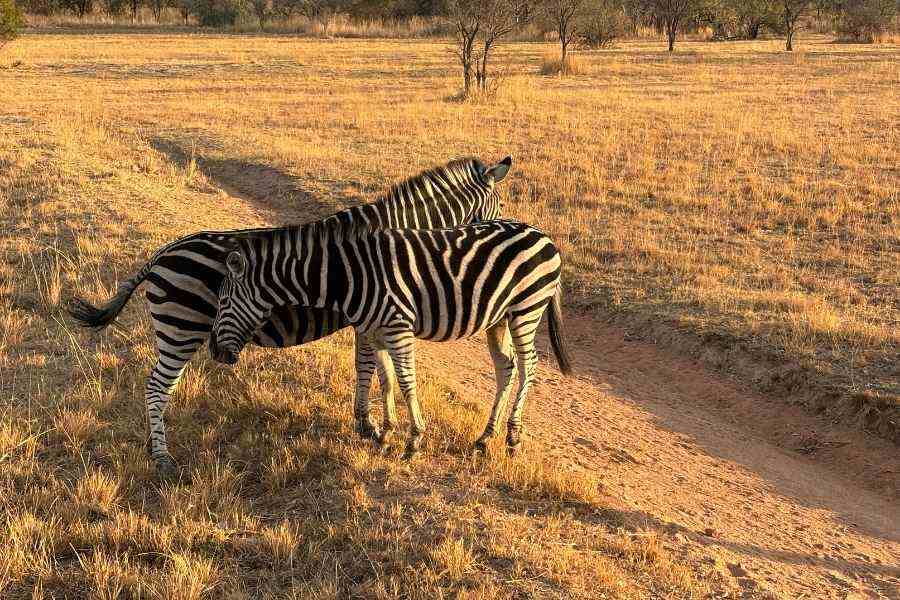
Every zebra has a unique set of stripes
We spot zebras and Russell points out that they are not as easy a target as they may seem. In fact, their sharp hooves and powerful kicks deter most predators. He also tells us that besides the Big Five, the reserve is also home to the Little Five — the red-billed buffalo weaver bird, the dragonfly-like antlion, the leopard tortoise, elephant shrew, and the rhino beetle. Another set of five to watch for at Mabula are the Ugly Five — hyenas, marabou stork, vultures, wildebeest, and warthogs, On the drive, we pick up other interesting trivia like how warthogs feast on elephant dung as its rich in nutrients, and wildebeest like salt licks, which provide them minerals for bone and muscle growth.
A day in the African wilderness
There is a pattern to my days at Mabula. I wake up at 5am to head out for safaris at dawn and late afternoons, and enjoy excellent meals in between. Sometimes I find time to chill in the pool and read a book. I also take out my sketch book and paints, and try to capture the scenes before me. Every night I sit on the porch and watch the star-studded sky.
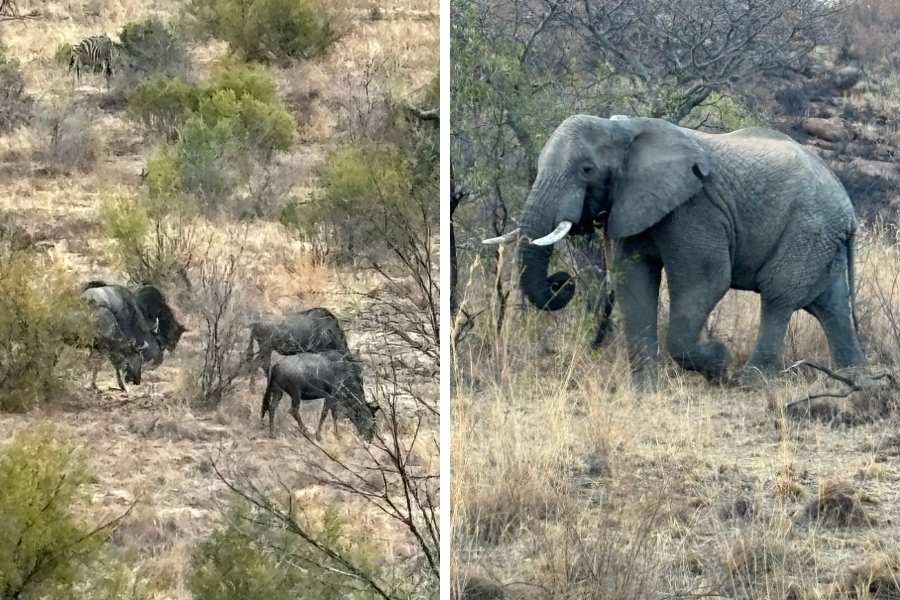
A herd of wildebeest and (right) a bull elephant in the African bush
Every game-ride jeep is thoughtfully provided with fleecy ponchos, binoculars, and a picnic box with coffee and biscuits. I delight in the weathered epidermis and floppy years of a feisty male African elephant bull that stands majestic in our path, and the stocky zebras that graze on verdant grass. Legions of ubiquitous impalas with the natural ‘M’ flanks are the ‘pigeons of the African bush’ — impala herds are known for their remarkable period of coordinated birthing during the rainy season, when the food is plentiful and that maximises the chance of survival of their young ones. Spotting a tiny dwarf mongoose, the majestic fish eagle, all add to the mystique of the bush drive.
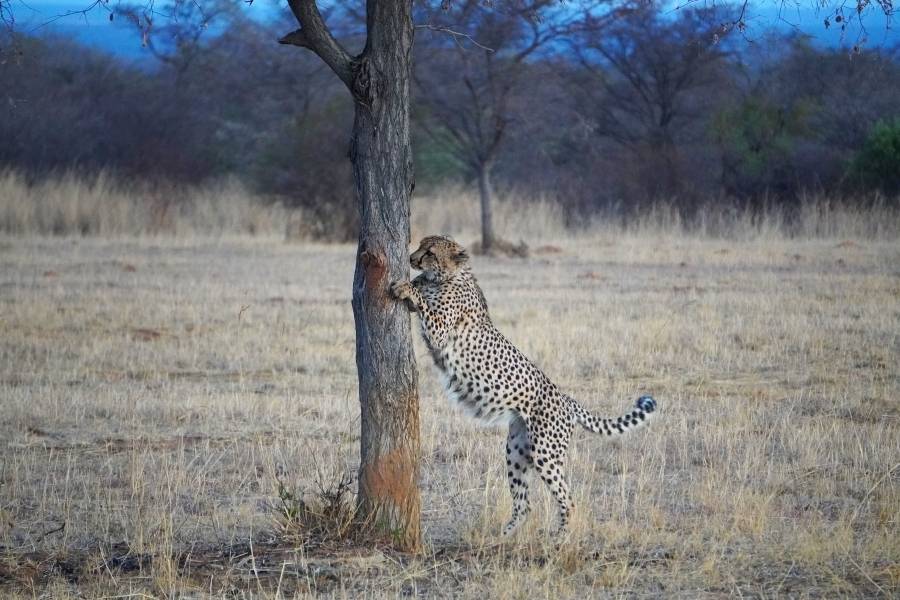
A cheetah marking its scent on a tree
The most exciting sighting is a cheetah, which we spot marking a tree by spraying his urine. Scent marking plays a crucial role in the communication of the animals. Russell explains that rhinos are creatures of habit, and even use the same place to defecate, creating what’s called a ‘midden pile’, where they leave and receive messages through scent. We learn that elephants communicate through pheromones that are released through bodily fluids such as sweat, urine, secretions from their temporal glands, and even dung!
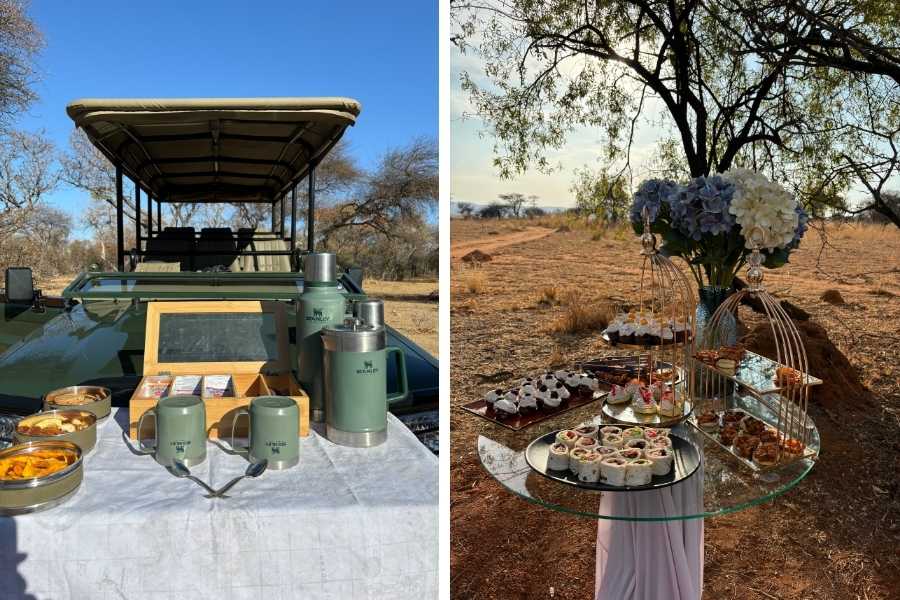
The high tea experience in the middle of the jungle
Among the most enjoyable experiences at the camp was the surprise alfresco high-tea experience, The surprise high tea is set up in the middle of the bush and on the menu are bite-sized canapes and sandwiches, salads, pastries and sundowners. It gives us a chance to soak in the beauty of the wilderness, replete with sounds of animals and birds around us.
While waiting for the safaris, I decided to relax with a massage at their luxurious spa. The spa uses only marula oil, which they also refer to as ‘elephant tree” because of a local legend about the tree, surrounding drunken animals who eat the fruit. Relaxed, I join the group for the next safari.
Meeting the pride
For our next safari experience, we drive to the Bakubung Bush Lodge in Pilanesberg Game Reserve, which is set in the crater of an extinct volcano. The lodge’s rooms, with views of the bush and waterhole, gives us a glimpse into the untamed.
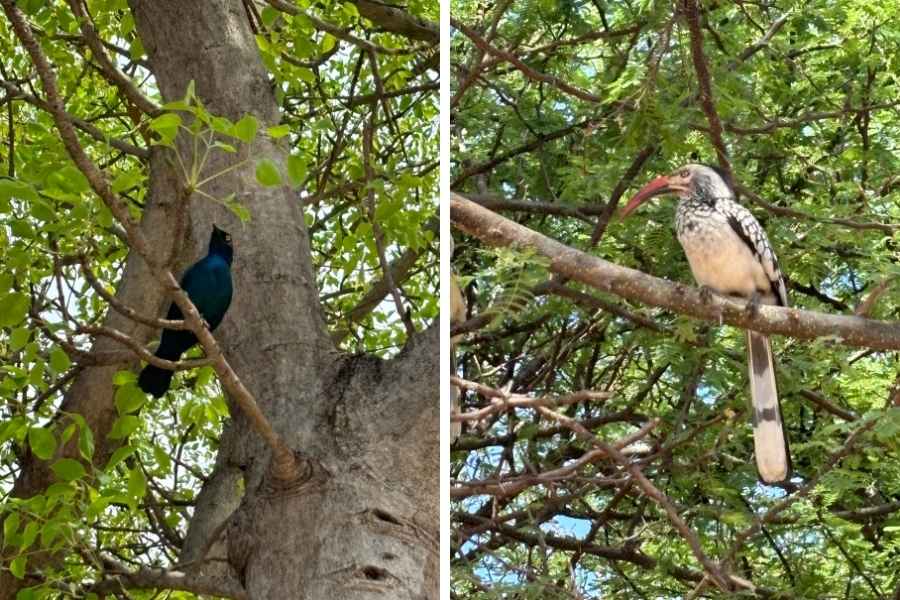
Spotting a Cape sterling and (right) a southern red-billed hornbill
Gregarious African banded mongoose scamper around in groups, and we spot flocks of hornbills and iridescent Cape starlings in the trees. I take a guided tree walk about the camp, learning about age-old trees like paper bark and ficus.
We get extremely lucky on our bush drives, spotting kudu antelope with their twisted horns, zebras and warthogs. We are wowed by the giant kingfisher and the grey lourie — also known as the go-away bird because of its distinct call. The petite steenbok antelope with its golden coat and large eyes, and the white rhinoceros seem to fade into the waist-high tawny grass, providing a visual feast. We also spot one of the tiniest antelope species in the world, known as the klipspringer, which have tiny pointed horns and seem to be walking on tippy toes but navigate the rocky terrain by expertly jumping from rock to rock!
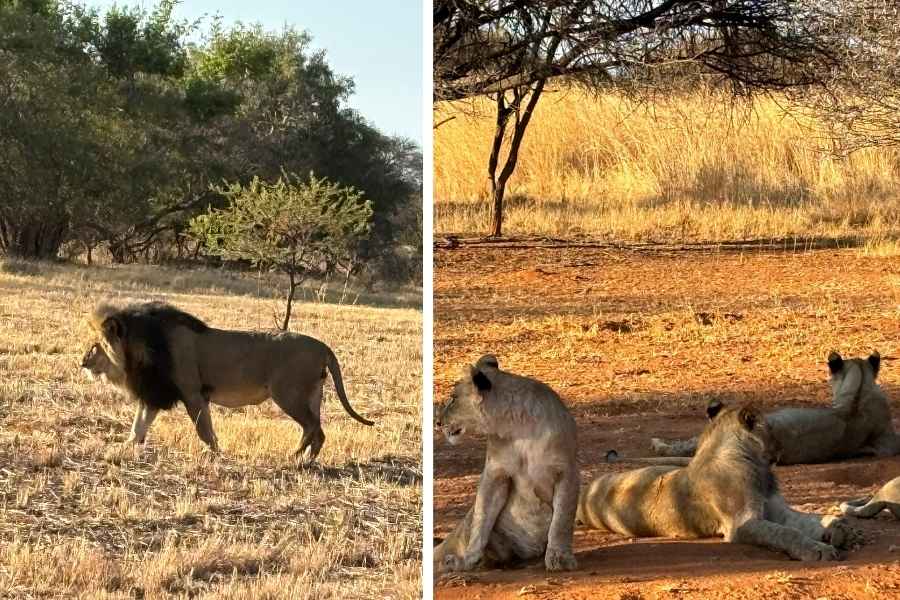
A pride of lions rests in the afternoon sun
The crowning glory of the evening, though, is following lion tracks and spotting the resting pride with the cubs. There's something unreal about seeing these magnificent predators up close.
Lessons from the wild
Sightings aside, perhaps the best aspect of the safari holiday are the lessons of mindfulness and rolling with surprises. There is an element of unpredictability when you’re this close to nature, and you cannot help but also feel humbled by the rich tapestry of flora and fauna.
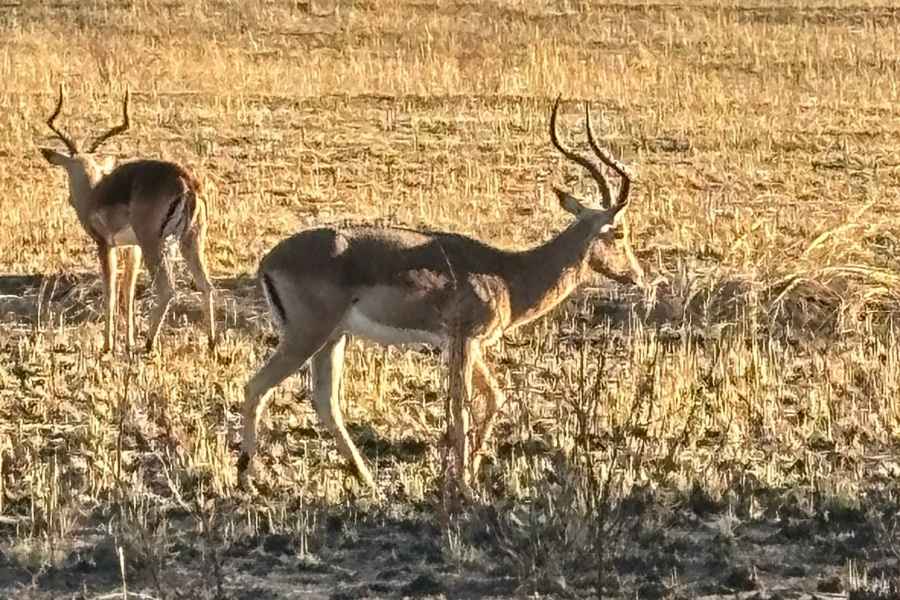
The impala are one of the many antelope species in South Africa
I learn to notice and appreciate the smallest details and nuances — the red-billed oxpeckers that clean ticks from the backs of big grazing mammals like rhinos, the pockmarked termite hills that dot the barren landscape, Africa’s smallest predator the dwarf mongoose, and the fact that every zebra’s prints are unique, just like our fingerprints.

